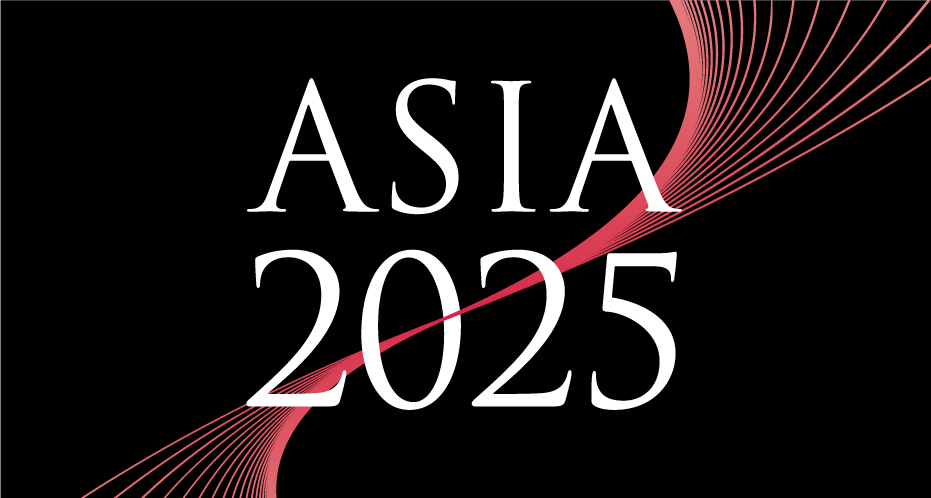Driving commercial and political engagement between Asia, the Middle East and Europe
Driving commercial and political engagement between Asia, the Middle East and Europe
Driving commercial and political engagement between Asia, the Middle East and Europe

For Asia 2025, an Asia House publication launched on March 8, Lord Browne of Madingley gave us his thoughts on the global energy markets. Please read below for the full piece.
Asia is transforming the scale and pattern of global energy demand. Today, just two nations, China and India, account for 36 per cent of the world’s population, 28 per cent of the world’s primary energy consumption and 16 per cent of global GDP. Over the next decade, the growing demand of households from Chennai to Chongqing will be one of the most significant factors shaping global energy markets.
I first visited China in 1979, as a Junior Manager at BP. China had just opened its doors to companies beyond its borders and BP was invited to Beijing along with other oil companies to discuss business. It was an exciting prospect, but I remember looking out of my hotel window during that first visit and feeling as far from the wealth and vibrancy of the world’s major cities as it was possible to be.
Before me was a monochrome sea of grey-green with wide streets and a remarkable lack of vehicles. No one expected to witness the dramatic transformation that has taken place since then. Standing on almost the same spot a few years ago, I could look down to the bright lights, across to the 10-lane highway of Chang’an, and up to the skyscrapers all around me. I felt that I was now standing at the centre of the world. It is perhaps the world’s biggest ever economic event.
Since 1979, China’s consumption of oil has grown by a factor of five, GDP has grown by a factor of six, and more than 500 million people have been lifted out of poverty. Even as China adjusts to slower rates of growth as it reorients the economy towards greater domestic consumption in the coming years, the long-term trajectory suggests a huge shift in the balance of global economic power.
By 2030, China’s middle class, those earning between US$10 and US$100 per day, is forecast to grow to more than 1 billion people. By then, more than 60 per cent of the world’s middle-class population will live in Asia.
However, the scale of this continuing transformation poses challenges for Asia and the wider world. Based on its current path, the growing demand for energy from Asia’s emerging middle class will dramatically increase the need for energy imports from vulnerable oil-producing regions and make it difficult to tackle the global threat posed by climate change. Asia is currently facing a future of increased dependency on energy markets beyond its borders.
The International Energy Agency (IEA) predicts that, by 2040, Southeast Asia’s net oil imports will more than double to 6.7 million barrels per day. An estimated 85 per cent of the crude oil travelling through the Strait of Hormuz is already destined for Asia and the prospect of continued reductions in the US’s need for imports means more of the Middle East’s oil exports will go to Asia in years to come.
Stability in the Middle East should therefore be of increasing concern to Asia. Today, global supply abundance means that terrorism and political tensions between Iran and Saudi Arabia are not forcing oil prices higher. However, in years to come, if the gap between supply and demand falls and tensions remain, Asia will be vulnerable to high energy prices that would reduce its competitiveness.
When it comes to the environment, India and China are responsible for about 30 per cent of current global carbon emissions, but there is huge scope for emissions to grow further. Though China’s per capita emissions are already greater than the EU average, a Chinese household on average consumes just a quarter of the electricity of a household in the UK. India meanwhile generates electricity using its large coal reserves – the fifth largest in the world – and is seeking to supply electricity to the one in five citizens who currently do not have access. If India is successful and the gap in consumption between households in Asia and Europe continues to close, it will mean a significant increase in fossil fuel consumption.
On this current path, it will be very difficult to keep global temperatures below the 2°C target agreed in Paris at the end of 2015. Based on its current path, the growing demand for energy from Asia’s emerging middle class will dramatically increase the need for energy imports from vulnerable oil-producing regions and make it difficult to tackle the global threat posed by climate change.
Both these scenarios suggest that Asia’s growing demand for energy will pose problems for Asia and the wider world. However, I think there are four key developments that might ensure that Asia has better governed, lower carbon, global energy markets in the decades to come.
First, people in Asia are putting greater pressure on governments to improve environmental policies. As CEO of BP in 2003, I remember taking a break from business meetings with our BP China team to walk along the bridge that connects the Summer Palace in Beijing with a central island on Kunming Lake. The air was filled with acrid yellow smog and by the time I had reached halfway across the bridge both shorelines had become invisible; my throat was raw and inflamed. These negative health problems were not a new phenomenon. For northern residents of China during the 1990s, it was estimated that local air pollution reduced their life expectancy by five and- a-half years. Growing dissatisfaction with pollution, however, has been nudging governments and businesses into taking greater care of the environment.
One example of this growing concern is the campaigning of Chinese Journalist Ma Jun, who founded the Institute of Public and Environmental Affairs. It is an organisation that enlists the help of online volunteers to produce air and water pollution maps from previously indigestible government data. It has exposed almost 100,000 instances of environmental non-compliance, and pressured more than 500 companies to draw up road-maps towards more environmentally friendly business practices. Hazardous pollution levels in Beijing still lead to school closures, suspended factory operations, and limits on the use of cars, but concerns about pollution are now part of the political debate. The actions of those like Ma Jun have the potential to move Asia away from the use of the most pollutant fuels and encourage greater fuel efficiency.
Second, the challenge of securing energy imports to meet rising demand is forging new bonds of trust with oil-exporting nations outside the Middle East. As CEO of BP in 2004, I suggested to Vladimir Putin the possibility of constructing a gas pipeline from the east of Siberia into China. A pipeline between the world’s biggest hydrocarbon producer and the world’s largest energy consumer seemed an obvious choice. But neither Putin nor Premier Wen Jiabao trusted each other to hold their part of a deal. Putin was worried that China might decide to cut the price they paid to half of the original agreement; Wen Jiabao was concerned that Russia would start charging double the agreed price. A lack of mutual trust scuppered any possible deal.
Today, however, a third of China’s oil imports now come from Russia and a recent deal with Gazprom will see a gas pipeline built from Siberia to the Chinese border, providing China with up to 38 billion cubic metres of gas per year. This deal might not have happened 10 years ago, but the need to secure energy from new sources has brought these nations closer together.
Third, global energy governance institutions could become more inclusive of Asia’s major developing economies. Energy crises of the past demonstrate the importance of cooperation through established international institutions. Excluding nations that shape the global energy market so significantly cannot be good for energy security in Asia or the rest of the world.
Last year, I led a Steering Committee for a research project by the Grantham Institute and the China Energy Research Institute, which looked at strengthening Asia’s role in global energy governance. The report argued that institutions, such as the IEA, that have worked since the 1970s to ensure cheap, secure and clean energy for member organisations should be open to major economies outside the OECD. Economies such as China, India and Indonesia in particular should be included to build stronger ties between the developed and developing world.
Fourth, technology is our greatest enabler and it offers Asia the best opportunity to overcome energy security and environmental challenges. China already leads the way in renewable energy investment, spending 30 per cent of the world’s US$270 billion invested globally in 2014. The results have been positive, with the cost of solar power falling by 75 per cent and wind power falling by almost 50 per cent over the past five years. These technologies are likely to become even more cost competitive.
At the Paris Climate Change Conference, 20 nations, including China, announced that they would double government funding for research and development into clean energy technology over the next five years. If this further improves the effectiveness of solar panels and wind turbines, improves the storage and transmission of renewable energy, and ultimately drives costs below those of some fossil fuels, it will make populations richer, energy cleaner and more secure, and Asia’s foreign policies less beholden to petro-politics.
As Asia’s remarkable transformation continues in the coming decade, global energy markets will have to overcome profound economic, technological and political challenges. History shows, however, that Asia has the will, ability and dynamism to develop the solutions to overcome them.
 The Lord Browne of Madingley is Chairman of Huawei Technologies UK Ltd and the former Group Chief Executive of BP (1995-2007).
The Lord Browne of Madingley is Chairman of Huawei Technologies UK Ltd and the former Group Chief Executive of BP (1995-2007).
He is also the current Chairman of L1 Energy (UK) LLP. He was a Partner of Riverstone Holdings LLC from 2007-2015, and prior to this he was Group Chief Executive at BP. He is a Fellow and former President of the Royal Academy of Engineering (2006-2011) and a Fellow of the Royal Society. Lord Browne is a member of the International Advisory Council at Asia House.
For further information on Asia 2025, or if you are interested in working with Asia House on a future publication, please email Samantha Deave, samantha.deave@asiahouse.co.uk.
